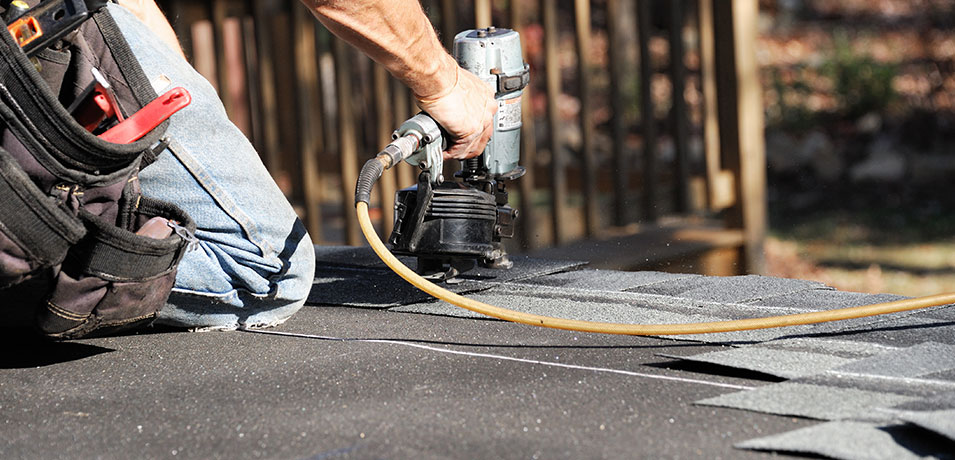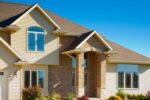10 Healthy Residential Roof Inspections Habits
As a homeowner, your dwelling is one of the most significant investments you will make in your lifetime. To protect this investment, a meticulous maintenance routine is crucial. Among the many tasks, one that often gets overlooked is the residential roof inspection.
Your roof is the first line of defense against elements such as rain, snow, hail, wind, and even the scorching sun. Over time, these factors can wear out your roof, leading to problems that might not be apparent until serious damage has occurred. Therefore, the importance of regular residential roof inspections can never be understated. There are authorised roofers new york, offering excellent roof inspection services.
Therefore, today we will discuss some healthy residential roof inspection habits that every homeowner should incorporate.
Top 10 Habits for Maintaining a Healthy Roof –
Regular Inspection Routine:
A regular roof inspection is a crucial aspect of home maintenance. It is recommended to carry out this process at least twice a year, optimally during spring and fall. This routine ensures that any damage inflicted by harsh winter or summer weather is promptly identified, mitigating the risk of escalating issues.
Inspecting your roof regularly not only helps spot obvious signs of wear and tear but also pinpoints potential hidden problems. Consistent checks can extend the life of your roof, save money, and maintain the structural integrity of your home.
Inspection After Major Storms:
In addition to routine inspections, a key aspect of maintaining your roof’s health involves checking for damage after significant weather events. Major storms, particularly those involving high winds, heavy rains, or hail, can cause immediate and visible damage to your roof.
Post-storm inspections can reveal issues like missing shingles, punctures, or leaks that may require immediate repair. This habit not only helps to maintain the durability of your roof but also ensures the safety and comfort of your home, preventing potential extensive water damage or insulation issues.
Safety First:
Performing roof inspections demands adherence to safety precautions. Climbing onto a roof presents risks, including slips or falls, so it’s imperative to use proper safety equipment. This includes a robust ladder, safety harness, and non-slip shoes, ensuring a safe and secure inspection process.
However, safety is not just about equipment. If you’re uncomfortable with heights, the roof’s slope is steep, or the roof’s condition appears precarious, don’t hesitate to hire a professional. Their expertise ensures a thorough inspection, mitigating risks associated with DIY efforts.
Visual Inspection:
A visual inspection is a fundamental aspect of roof maintenance. During this process, look for obvious signs of damage such as missing, cracked, or curling shingles, which can indicate exposure to extreme weather conditions.
Also, be aware of organic growth like moss or algae. These can point to trapped moisture, a potential threat to your roof’s lifespan. Regular visual checks help in identifying and addressing these issues promptly, averting further structural damage. Early detection is key to ensuring the longevity of your roof.
Inspect Gutters and Downspouts:
Inspecting gutters and downspouts is a crucial part of any comprehensive roof inspection. These components play a vital role in directing water away from your home’s foundation, helping to prevent potential water damage.
Ensure that your gutters and downspouts are free of debris such as leaves, nests, or dirt, which can cause blockages. Regularly clearing your gutters not only helps extend their lifespan but also prevents water from backing up and seeping into your home’s structure. This habit significantly reduces the risk of costly repairs.
Check Flashing:
Checking the condition of your roof’s flashing is a crucial component of a thorough roof inspection. Flashing is typically located around structures that protrude from your roof, such as chimneys, vents, and skylights, serving as a barrier against water intrusion.
Check that the flashing is in good condition and well-sealed.
Damaged or improperly installed flashing can provide an entry point for water, leading to costly structural damage. Regular inspection and maintenance of your roof’s flashing can significantly reduce the risk of leaks and contribute to your home’s overall structural integrity.
Inspect the Attic:
Inspection of your roof isn’t just an external job, the interior of your home can also reveal important signs of roof health. Your attic, in particular, is a crucial area to examine as part of your regular roof maintenance routine.
Look for signs of water intrusion like leaks, water stains, or mold growth in the attic. Also, check for daylight peeking through the roof boards, which could indicate missing shingles or gaps in your roof. Such internal checks help in the early detection of potential problems.
Look for Sagging:
Monitoring your roof for any signs of sagging is a crucial part of your roof inspection habits. A sagging roof is often indicative of significant structural issues, which may result from a variety of factors such as water damage, incorrect installation, or structural decay.
If you notice any areas of your roof dipping or appearing uneven, it’s important to contact a roofing professional immediately. These signs can indicate serious structural problems that need to be addressed promptly to prevent further damage or potential roof collapse.
Professional Inspection:
While performing roof inspections on your own is commendable, there’s considerable value in enlisting a professional’s expertise. Professionals are trained to identify subtle issues that an untrained eye might overlook. Hence, it’s beneficial to schedule an annual professional roof inspection.
Professional roof inspectors have the knowledge and tools to provide a comprehensive assessment of your roof’s condition. They can spot potential problems early and offer appropriate solutions. This habit, although an investment, can prevent costly repairs in the future and extend the lifespan of your roof.
Maintenance Is Key:
The ultimate goal of regular roof inspections is to keep up with preventative maintenance. Addressing minor issues promptly can prevent them from escalating into serious problems, ultimately extending your roof’s lifespan and saving significant repair or replacement costs.
Remember, a well-maintained roof not only protects your home from the elements but also contributes to its overall value. By cultivating a habit of regular maintenance, you can ensure the safety and structural integrity of your home, safeguarding your investment for years to come.

Wrapping it up –
In conclusion, residential roof inspection might seem like a daunting task, but adopting these healthy habits can help safeguard your investment. A well-maintained roof not only protects your home but also significantly contributes to its value. So, take that step today, inspect your roof, and ensure the safety and integrity of your home.
If you are looking for professional roofers for regular roof inspections, DSS Roofing is here. We are providing outstanding residential roof inspections new york with our professional roofers. Our professional roofers are well-versed in their field and serve all roof-related services. Our other services include roof installation, snow removal, maintenance, 24/7 emergency service, and many more. Keep your roof safe with our quality roofing services.



